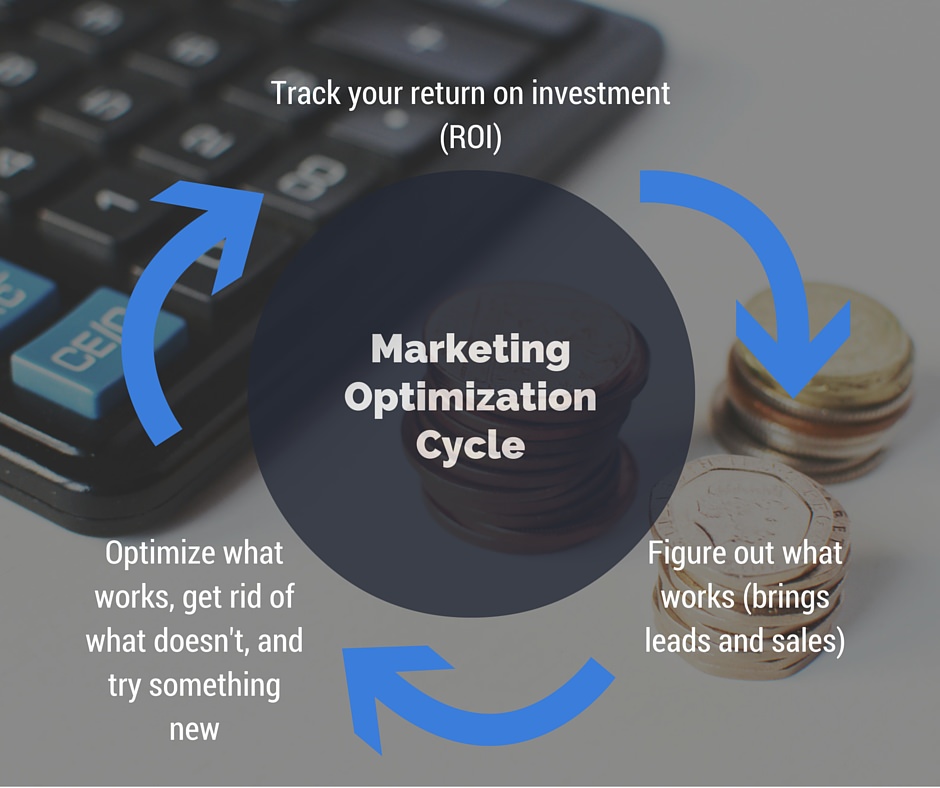Small business owners often ask us how much time and money they should invest in digital marketing efforts such as SEO, Social Media, SEM, and blogging. We never give the same answer out twice.

Does your target audience peruse paper or touch screen?
Each business has a different target audience, conversion value (the cost of a single sale), and marketing budget—many of which are heavily invested in traditional forms of marketing like mailers, billboards, and networking (the cost being calculated in man-hours rather than dollars). Earlier this month, I began a discussion around how to begin determining your marketing budget and how to divvy it up between digital and traditional channels. In Part I, I encouraged readers to begin with an honest assessment of their current marketing efforts:
- Keep your current marketing budget in mind, but don’t cling to it.
- Audit your monthly marketing practices.
- Calculate your lead to conversion rate.
- Think about outbound vs. inbound leads.
If you’ve done this before, then you know that it is simple—but not easy. You’ve likely invested a good bit of time auditing what your company does to drive sales (Step 2) and how well your efforts are working (Step 3).
Now it’s time for Steps 5 – 8!
To help illustrate, meet T-Co., a fictional provider of specialty building material kits, including their flagship product, a customizable “Rough Cut Lumber Porch Kit”.

T-Co. utilizes only traditional marketing methods to connect with new clients (mostly builders) and make sales. Once T-Co. connects with a builder, they usually maintain a longstanding relationship; however, T-Co. also wants to begin selling its materials directly to homeowners due to a recent increase in DIY renovation projects.Their ultimate goal is to sell 175 kits per month between both target audiences, up from a current sales number of 75 per month.
Without further ado:
5. Determine how many leads you’ll need.
Your current conversion rate is not set in stone—the goal of this series is to make it increase!—but it will still come in handy. Using your conversion rate, determine how many leads you need to attract to get the number of monthly sales you want.
Note: If you do not currently utilize digital marketing efforts, but wish to estimate how much it could cost, use an average conversion rate of 4%.
Here’s an example from a marketing activity T-Co. already does: catalog mailers. T-Co.’s Marketing Director, Wendy, hires outside graphic design, writing, and printing services to create a monthly mailer that goes out to builders throughout the region. Because Wendy speaks to new contacts about how they found out about T-Co., Wendy can estimate with a fair amount of accuracy that the mailer, which goes out to 2,250 builders per month, is responsible for about 750 website visits and calls per month (leads), which end in 75 unique sales per month, an impressive lead-to-conversion rate of 10%. The mailer currently costs $6,000 per month.
Using the mailer’s 10% conversion rate, to drive 100 additional sales per month, Wendy will have to increase the mailer’s output accordingly. However, the mailer has never been geared towards homeowners, nor does T-Co. have a list of residential addresses.
Now, here’s an example from a digital marketing practice T-Co. is thinking about implementing: Social Media Marketing (SMM). Wendy has determined that to reach individuals interested in home projects, T-Co. should consider placing ads on Facebook or Pinterest, since that’s where her target audience is active. Plus, she can target individuals who own homes and show interest in DIY projects. Using a general conversion rate of 4%, Wendy determines that social media ads will need to produce 2500 leads to meet her sales goal of 100 purchases per month.
6. How expensive are leads?
Once you have estimated how many leads you need to reach your sales goals, then it’s time to assess the potential cost and ROI of each.

For T-Co., a video series attracts inbound leads and complements social media advertising.
During this step, T-Co. calculated that increasing mailer activity according to the new goals would lead to a total spend of $12,000/month (an increase of only $6,000 due to bulk ordering rates), but that this increase would only lead to a gain in B2B clients.
To pursue new homeowner clientele via digital marketing, Wendy consulted with a marketing agency about what it would cost to attract 2500 new leads each month. The marketing agency suggested starting with a monthly SMM budget, which includes the cost of ads and the cost of professional management, of $12,500/month. In addition to ads, the digital marketing agency suggested a how-to video series at a one time cost of $12,000. The idea would be to attract inbound leads, potential customers actively searching for a products like T-Co.’s.
7. Choose channels for max ROI. (Sounds simple enough.)
You’ve made it so far into this process (or at least into this blog post, which is a feat in itself)! Now for the toughest part: making a decision based on what you’ve learned. There may be more than one possibility for reframing your marketing strategy and practices. As a savvy businesswoman or man, you know there is no guaranteed success formula, but now you have valuable information you can use to move your marketing up to the next level.
What do you think T-Co. decided to do? Because T-Co.’s average kit costs $2,000, meeting a sales goal of 175 per month would make pursuing both the mailer and the social media marketing campaigns feasible ($24,500 would be exactly 7% of their gross revenue), but the video series—and the inbound leads— would be out of reach; plus, it would put strain on their finances in the short term.
After discussing their options as a team and with the marketing agency, T-Co. decided to only slightly increase their current mailer circulation and to invest in the full Social Media Marketing campaign. They also decided to purchase the video series but to spread out filming and payments over six months.
Their efforts will help both in the short term, generating awareness, and the long term: using a new lead capture form on their website, T-Co. and Wendy will be able to gather information from website visitors interested in staying in touch, further capitalizing on the excellent ongoing relationship T-Co. has with builders and homeowners alike.
8. Track ROI, rinse, and repeat!

Depending on your marketing platform, reevaluate every three months to one year.
As you implement your plan, track the big three: leads, sales, and cost per sale. You and your marketing provider will most likely need to work together closely to form a complete picture. In time, you’ll be able to see what’s working, particularly from where you are attracting the most inbound leads (See Step 4). Then, you can make adjustments accordingly, further optimizing your marketing efforts and getting the most out of your work, whether it’s old school, new school, or a combination of both.
The post How to Set Your Traditional and Digital Marketing Budget [8 Steps] – Part II appeared first on Engenius.